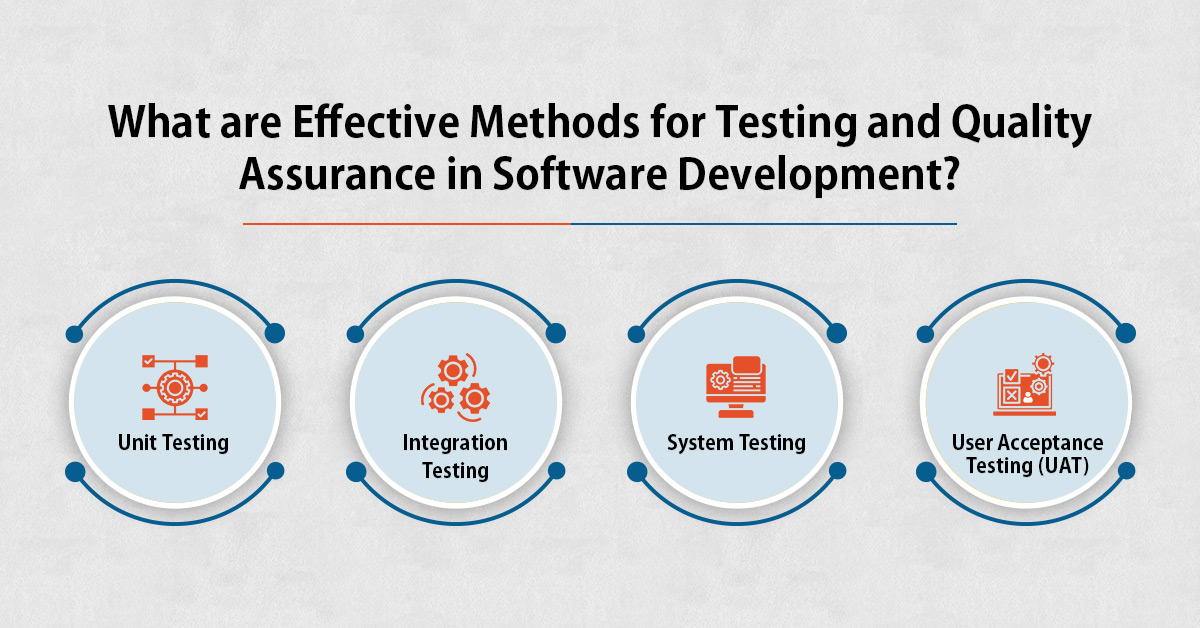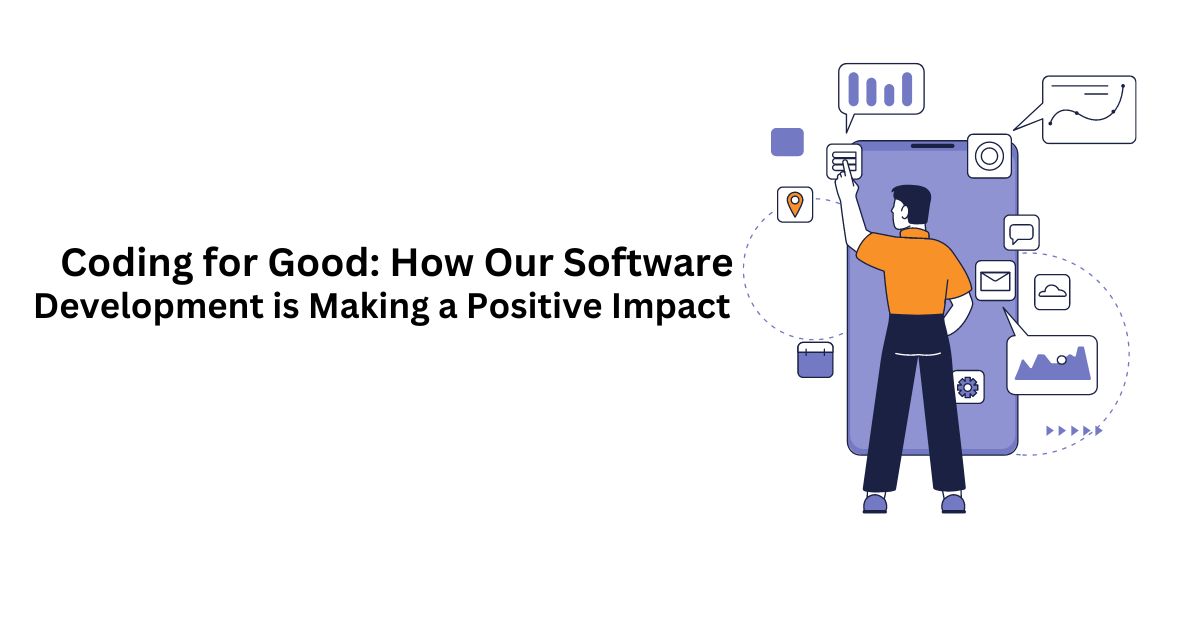Best Practices for Customizing Software and Ensuring Data Security

5 min read
Software customization is not an option; it’s a must for companies looking to maximize efficiency and differentiate themselves in a crowded market. However, data protection is the biggest issue in customizing software to meet particular corporate demands. This blog post explores the best ways to modify software efficiently while upholding the strictest data security guidelines.
What Specific Customizations are You Looking For?
Knowing your business goals is the first step toward effective software customization. It’s essential to analyze your current software systems in-depth and find any gaps that can be filled with modification. Are you trying to add new features, boost productivity, or enhance user experience? Comprehending these prerequisites is essential for an efficacious customizing approach.
Furthermore, it’s important to include end users, IT staff, and management, among other stakeholders, in this process. Their opinions may offer important new perspectives on the viability and effects of the suggested modifications.
How do you choose the Appropriate Tools for Customization?
Software customization options, ranging from complex commercial software to open-source platforms, abound on the market. The secret is to select tools that complement your technical expertise and organizational objectives. For example, open-source tools are more affordable and flexible but could need more technical know. Conversely, proprietary technologies may have more expensive but specialized security features and support.
It’s important to consider these technologies’ scalability and integration potential. The selected tool should be able to develop with the firm, keep up with technological advancements, and meet present needs.
Best Practices in Software Customization
To preserve the functionality and integrity of the current system when modifying software, caution must be used. It may be simpler and more effective to customize a modular design. Without interfering with the overall system’s operation, each module or component can be upgraded or changed separately.
Customization heavily relies on documentation. Thorough documentation of the adjustments ensures easy future modifications or troubleshooting. In addition, maintaining the quality and readability of the code depends on following best practices and coding standards.
How Can Data Security Be Ensured During Software Customization?
Organizations can benefit greatly from software customization, but it cannot be easy without sacrificing data security. The following pointers will assist you in keeping strong security measures in place while customizing your program to fit your company’s particular requirements.
-
Implement strong access control measures
Start by implementing strong access control mechanisms. To ensure that only authorized users can access and edit data, you need to specify user roles and permissions in your system. Using biometric verification or multi-factor authentication for high-level access may be part of this.
- Assign access privileges in accordance with jobs and obligations
- Implement multi-factor authentication for sensitive data
- Regularly review access rights to avoid privilege creep
-
Encrypt Sensitive Data and Secure Data Transmission
Another effective instrument for data protection is data encryption. Encrypting any sensitive data is a good idea for both transmission and storage. Transferring data over an encrypted connection, such as HTTPS or SSL, ensures it cannot be intercepted.
- Encrypt all sensitive data in storage and during transmission
- Use secure (SSL or HTTPS) connections for data transmission
Read More: Security Solutions in Software Development: Safeguarding Data and Systems
-
Regularly Backup and Update Data
Maintaining regular data updates and backups is essential for recovering data during data loss. Additionally, ensure all software is updated to take advantage of the most recent security updates.
- Backup data at regular intervals
- Promptly apply software updates and patches
-
Train Employees on Data Security Practices.
Include training on data security in your continuous professional development and staff orientation. A workforce knowledgeable about data breaches can serve as the first line of defense.
- Schedule regular data security training for all employees
- Discuss the potential consequences of data breaches and the importance of adhering to security protocols
-
Monitor for Any Unauthorized Access or Breaches
Finally, it is important to check for breaches or illegal access constantly. Real-time alerting security systems can assist in identifying risks and taking action faster.
- Use security monitoring tools for real-time threat detection
- Prepare an incident response strategy in case there are any breaches.
You may have the advantages of customized software and strict data security at the same time by putting these best practices into practice.
What are Effective Methods for Testing and Quality Assurance in Software Development?
Good testing is a defense against potential operational problems and security flaws, making it an essential step in software modification. There are various key sorts into which this phase can be broadly classified:

- Unit Testing: Software modules or individual components are tested separately during unit testing. The goal is to ensure that every unit operates accurately and effectively. In a customized environment, where new or modified modules may have unanticipated effects on the product’s overall functionality, it is especially crucial.
- Integration Testing: Integration testing evaluates the degree to which the various modules or components function as a unit after unit testing. It is important because customized software integrates newly added or altered components with preexisting ones. The main goals are finding interface flaws and ensuring continuous data flow between modules.
- System Testing: This testing phase is thorough and involves evaluating the system as a whole to ensure it satisfies the requirements and operates as intended in the intended environment. To ensure that the software system is fully ready for deployment, system testing tackles numerous aspects, including security strategies, performance, and functionality.
- User Acceptance Testing (UAT): UAT is essential to confirm that the software is user-friendly and satisfies business needs. End users test real-world scenarios to verify the software’s general operation and usability. UAT feedback can be very helpful in optimizing the product before it is finally deployed.
These testing approaches can help firms drastically lower the risks of customizing software. It ensures that the program satisfies the highest requirements for performance and security and is free of bugs.
What Training and Support Strategies are Essential for Successful Software Implementation?
Effective training and support systems are necessary for customized software due to its distinct features and workflows. Extensive training programs ensures that users are proficient in the new features, which promotes effective software use. To ensure a deeper knowledge and a simpler adoption process, it is imperative to customize these training sessions to different user groups based on how they utilize the program.
Building a strong support system after deployment is essential to handle any issues arising from technical difficulties or user inquiries. A specialized help desk, online tools like tutorials and FAQs, and routine upgrades and maintenance are a few examples. A skilled and helpful support staff can guarantee the software solution’s longevity and efficacy while significantly improving customer happiness.
Conclusion
In conclusion, if software customization is executed with a strategic focus on functionality, user experience, and, most importantly, data security, it may be a potent tool for improving corporate processes. In any custom software customization project, thorough testing, quality assurance, training, and dependable support must be incorporated. Businesses can maximize the potential of their software solutions by following these best practices, which will ensure that the solutions are reliable, safe but also effective, and user-friendly, meeting the particular requirements and difficulties of the contemporary digital environment.
Published: January 10th, 2024





